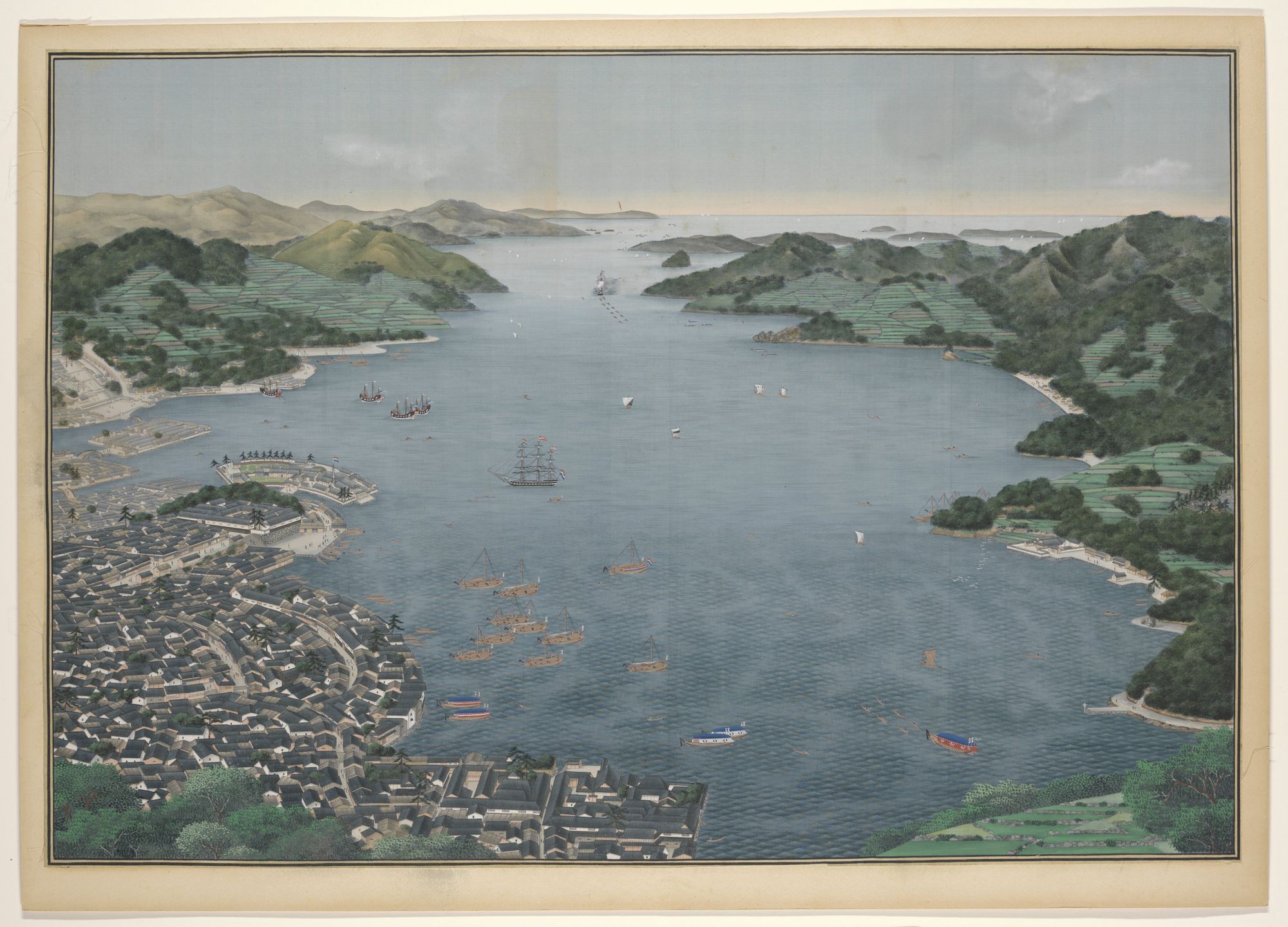Nagasaki

Nagasaki is located in south-west Japan, on the west side of Kyushu island. Its deep natural harbour gives access to the East China Sea. Today the population of the city is estimated to be around 400,000.

The Korean port of Busan is around 165 nautical miles away (305 km), Shanghai 462 nautical miles (855 km), and Macau around 1100 nautical miles (2037 km).

Nagasaki was one of Japan’s main gateways for international trade in the early modern period. Its early development as a trading port was linked to the arrival of Portuguese traders and Jesuit missionaries from the mid-sixteenth century onwards. When the ruling Tokugawa shogunate implemented a restrictive trading policy from the middle of the seventeenth century, certain sectors of Japan’s international trade were concentrated in the city. This policy lasted until the 1850s when Japan was forced to lift it under Western military pressure.

Under this trade policy, all commerce with China was limited to the port of Nagasaki and this became the city’s most important economic lifeline in this period. Chinese merchants were allowed to reside in the city, but were obliged to live inside a walled compound (‘Tojin Yashiki’), seen depicted here. Through Nagasaki Japan mostly imported Chinese silk, Indian cotton textiles, hides and sappan wood from Siam, and sugar from Java.

Trade with Europeans was also limited to Nagasaki. In 1641 Dutch traders were obliged to move from their factory in Hirado to the small, artificial island of Dejima in the Bay of Nagasaki on which they operated under strict supervision until 1854. In this period they were the only Europeans officially permitted to trade in Japan, but not allowed to leave the island. The drawing here shows the Dutch factory on the island around 1824. As you can see, the Dutch factory is much smaller than the Chinese one, reflecting the greater importance of Sino-Japanese trade.

This drawing from ca. 1810 depicts Japanese and Dutch merchants trading and weighing goods on Dejima. The goods seen here are possibly copper, which was an important export product of Japan in this period. Copper exports replaced the export of silver and gold, which had been major export commodities in the sixteenth and seventeenth centuries until their export was banned by the Tokugawa. Most of these precious metals were destined for other parts of Asia (mainly China and India) where they were used for coinage.
References
Feature image: Part of: Kano Domi (attrib.), 'Namban folding screens', Wooden lattice covered with paper, gold leaf, polychrome tempera painting, silk, lacquer, copper gilt, 16th/17th century. Museu Nacional de Arte Antiga, Lisbon. Link: http://www.museudearteantiga.pt/collections/art-of-the-portuguese-discoveries/namban-folding-screens
Yasunori, Arano. ‘Foreign Relations in Early Modern Japan: Exploding the Myth of National Seclusion’, 18-1-2018. https://www.nippon.com/en/features/c00104/foreign-relations-in-early-modern-japan-exploding-the-myth-of-national-seclusion.html(Nippon Communications Foundation), accessed 9-9-2023.
Shimada, Ryuto. The Intra-Asian Trade in Japanese Copper by the Dutch East India Company During the Eighteenth Century. Boston: Brill, 2005.
